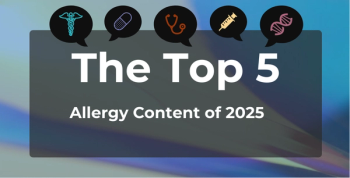
New CPX-351 Data Underscore Complexity of Treating AML in Older Patients
Key Takeaways
- CPX-351 showed a 49% CR/CRi rate in older patients with secondary or high-risk AML, with 67% achieving MRD negativity.
- Early mortality was higher, and fewer patients underwent allo-HSCT compared to previous studies, potentially affecting OS results.
Phase 2 data show about half of patients with high-risk or secondary acute myeloid leukemia achieved a complete response or complete response with incomplete hematologic recovery after one or two cycles of induction therapy with CPX-351.
New phase 2 data on the treatment of older patients with secondary or high-risk
Corresponding author Pau Montesinos, MD, PhD, of Hospital Universitarii Politècnic La Fe, in Spain, wrote along with colleagues that secondary AML (sAML) is particularly challenging to treat, “because of the convergence of disease and patient-related factors, including adverse cytogenetic and molecular features, prior exposure to hypomethylating agents, and comorbidities. They noted that the disease is also more common in older patients than in younger patients, further complicating treatment decisions.
CPX-351 is a liposomal encapsulation of cytarabine and daunorubicin, at a fixed synergistic molar ratio of 5:1. In a randomized, open-label phase 3 study
Yet, Montesinos and colleagues noted the previous research left a number ofimportant issues unaddressed, including the impact of measurable residual disease (MRD), quality of life, the role of granulocyte colony-stimulating factor (G-CSF) priming, or the applicability of a CPX-351 maintenance schedule. The goal of the new trial was to validate the previous research and answer some of those unresolved questions.
The investigators recruited 59 patients between the ages of 60-75 with newly diagnosed sAML or high-risk AML. The group had a median age at screening of 68 years. Twenty-three of the patients in the cohort were over the age of 70. The patients were enrolled between December 2019 and December 2020 and received care at one of 12 academic medical centers in Spain. All patients underwent induction therapy that included G-CSF priming.
The study’s primary end point was complete remission (CR) or complete remission with incomplete hematologic recovery (CRi) after induction. If eligible, patients were recommended to undergo allogeneic hematopoietic stem cell transplantation (allo-HSCT) after their first consolidation cycle, or they could receive up to 6 maintenance cycles with CPX-351.
Twenty-nine patients (49%; 95% exact CI, 37%-62%) achieved CR or CRi after one or 2 cycles of induction therapy. They had an MRD negativity rate of 67%. In patients with serial next-generation sequencing data available, about one-third (35%) achieved clearance of somatic mutations that were present at diagnosis.
The median event-free survival (EFS) at the median follow-up of 16.8 months was 3.0 months (95% CI, 1.4-7.3 months), and median OS was 7.4 months (95% CI, 3.7-12.7 months). Landmark analysis at day +100 showed patients who underwent allogeneic hematopoietic stem cell transplantation had higher OS and EFS (70% OS [95% CI, 47%-100%] and 70% EFS [95% CI, 47%-100%]).
Montesinos and colleagues wrote their CR/CRi rate was similar to that of the pivotal CPX-351 trial, which they said suggests G-CSF priming did not make a meaningful impact on remission rates. EFS and OS were consistent with the previous phase 3 study, they wrote.
Yet, they added that the current study had higher early mortality rates than were higher than that of the pivotal phase 3 trial, and fewer people underwent allo-HSCT.
“Restrictive protocol recommendations on allo-HSCT indication, with transplantation being advised against in patients older than 70 years (representing 39% of our cohort), the availability of an alternative maintenance option for patients not undergoing allo-HSCT, and the conduct of our trial during the lock-down of the severe acute respiratory virus–coronavirus-2 (SARS–CoV-2) pandemic, might have been contributing factors, all of them potentially influencing the OS results in our study cohort,” they noted.
Montesinos and colleagues said these data did not match the EFS and OS rates seen in previous real-world studies of the therapy. For instance, an
“We hypothesized that the outpatient administration of maintenance cycles with low doses of CPX‐351 might prolong remission duration with limited toxicity,” they wrote. “Although it was demonstrated that this strategy was feasible from a safety and tolerability perspective, EFS and OS were poor, and no survival plateau was observed in this patient subgroup.”
One reason for the discrepancies, they wrote, may be related to varying rates of allo-HSCT among countries.
Montesinos and colleagues said these data should not be seen as calling into question the previous phase 3 data, but they wrote that they might help clarify an unmet need for more effective therapies for some patient subgroups.
“Notwithstanding these limitations, our data provide novel insights that might inform the clinical positioning and optimal use of CPX-351, complementing previous results from pivotal and registry studies,” they concluded.
References
- Rodríguez-Arbolí E, Rodríguez-Veiga R, Soria-Saldise E, et al. A phase 2, multicenter, clinical trial of CPX-351 in older patients with secondary or high-risk acute myeloid leukemia: PETHEMA-LAMVYX. Cancer. Published online October 30, 2024. doi:10.1002/cncr.35618
- Lancet JE, Uy GL, Newell LF, et al. CPX-351 versus 7+3 cytarabine and daunorubicin chemotherapy in older adults with newly diagnosed high-risk or secondary acute myeloid leukaemia: 5-year results of a randomised, open-label, multicentre, phase 3 trial. Lancet Haematol. 2021;8(7):e481-e491. doi:10.1016/S2352-3026(21)00134-4
- Guolo F, Fianchi L, Minetto P, et al. CPX-351 treatment in secondary acute myeloblastic leukemia is effective and improves the feasibility of allogeneic stem cell transplantation: results of the Italian compassionate use program. Blood Cancer J. 2020;10(10):96. Published 2020 Oct 6. doi:10.1038/s41408-020-00361-8
Newsletter
Stay ahead of policy, cost, and value—subscribe to AJMC for expert insights at the intersection of clinical care and health economics.







































